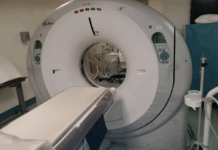Interest is of research by concrete resistance, as well as the joint work of concrete and reinforcement in reinforced concrete structures that are freezing at low temperature. It was established that when freezing concrete to a temperature of -60, -70 ° C, an abnormal expansion of concrete occurs, the maximum of which is achieved at a temperature of 40, -50 ° C.
At the same time, significantly stretching efforts arise in reinforcement, compressing efforts in concrete, and with a reinforcement that is uneven in cross section and a large bending moment, in turn, causing the appearance of stretching efforts and, accordingly, a tense state of concrete in a stretched zone. The expansion of concrete at the specified temperature is spasmodic in nature. With a further decrease in temperature to -170, — 190 ° C of such a jump is not observed. The physico-chemical characteristics of concrete (for example, strength and elasticity module) in all the studied temperature interval were also obtained. At the same time, the influence of alternating multiple deep cooling and thawing concrete on its resistance was studied. Recommendations were compiled on the selection of concrete compositions for reinforced concrete structures designed to work in some industrial structures.








